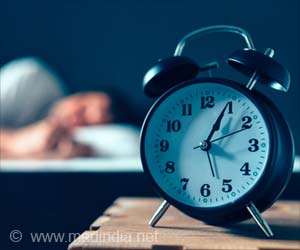As clocks march ahead and daylight-saving time begins, there can be anxiety about losing an hour of sleep and how to adjust to this change.

‘When daylight saving time starts and clocks are set forward, the time difference can cause a feeling like jet lag.’





For the start of DST, we set our clocks forward one hour at 2 a.m. on the second Sunday in March, resulting in one less hour of sleep that night. Then, at 2 a.m. on the first Sunday in November, we set our clocks back one hour.Adjusting the time by one hour may not seem like too drastic a change, but experts have noted troubling trends that occur during the transition between Standard Time and DST, particularly in March.
How Daylight-Saving Time Affects Sleep
Humans and other mammals are guided by circadian rhythms, which are 24-hour cycles that regulate sleep and other key bodily functions such as appetite and mood. These rhythms are largely dependent on light exposure.To reset each day, they must be synchronized with natural light-darkness cycles to ensure healthy, high-quality sleep. The transition between DST and Standard Time has darker mornings and more evening light.
This can essentially “delay” your sleep-wake cycle, making you feel tired in the morning and alert in the evening. Circadian misalignment can contribute to sleep loss, as well as “sleep debt,” which refers to the cumulative effect of not getting enough sleep regularly.
Humans are most vulnerable to sleep deprivation in early March, as they transition from Standard Time to DST. In addition to sleep loss, people are at greater risk of mood disturbance, suicide, and being involved in traffic accidents during both bi-annual transition periods. However, experts suggest that long term, there is a reduction in accidents as more people drive home from work in daylight.
Daylight Saving Time Sleep Tips
In the days and weeks leading up to time changes, you can prepare yourself for the adjustment by practicing good sleep hygiene, establishing a consistent sleep routine, spending time outdoors, taking nap during the day, and limiting the intake of coffee.Advertisement















